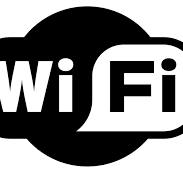
In a world where Wi-Fi is almost as essential as breathing air, many of us think we know everything about our router. But is it really so? In fact, the multifunctionality of modern Wi-Fi routers is often underestimated, and their “hidden” features can greatly improve your everyday internet experience. In this article, we will reveal some of these secrets.
Guest network
Creating a guest network on a Wi-Fi router is a way to provide Internet access to friends and guests without compromising the security of your main network. It’s a separate access with its own name and password that isolates guests from personal files and devices on your network. This approach not only increases security, but also convenience, allowing you to easily change settings or passwords without affecting the main one. You no longer need to share your main Wi-Fi password with everyone who comes to visit.
How to set up a guest network?
Setting up a guest network is usually quite simple and involves just a few steps:
- Log in to your router’s web interface using a browser.
- Find the Wi-Fi or wireless settings section.
- Select an option to create or configure a guest network.
- Set the network name (SSID) and password for the guest network.
- Save the settings and reboot the router if necessary.
Please note! It is important to check that your router supports the guest networking feature, as not all models have this capability.
Controlling bandwidth
Controlling the bandwidth on a Wi-Fi router allows you to determine how much Internet speed each device on your network receives. It is an ideal tool for distributing Internet speeds so that important tasks have enough resources and less critical tasks have limited access. This feature prevents one device from overloading the network and ensures that the Internet is distributed evenly among all users.
Wi-Fi planning
The Wi-Fi Schedule feature on your router allows you to set your wireless network to automatically turn on and off according to a schedule of your choice. This can be especially useful at night or when you are away from home for a long time. This method will reduce energy consumption and provide additional protection against unauthorized access to your network.
With this feature, you can specify specific hours when Wi-Fi should be active and when it should automatically turn off. For example, if you know that no one will be using the Internet from 11 p.m. to 7 a.m., you can configure the router to turn off Wi-Fi during this period.
The option not only helps to reduce energy costs, but also reduces the potential health effects of electromagnetic waves during sleep, although scientific research in this area is still ongoing and has no definitive conclusions.
To configure the scheduling, you will need access to the router’s management interface, which is usually accessible through a web browser. In the management interface, find the section dedicated to Wi-Fi settings. There you can also find the option to schedule Wi-Fi.
Connecting external devices
Using the USB port on your Wi-Fi router to connect external hard drives or printers will make your home network even more functional. You can easily share files and documents between all connected devices and use the printer without the need for a direct connection to a PC. It is also possible to connect 3G/4G modems to provide a backup Internet connection, which will ensure reliable and uninterrupted access to the network.
VPN support
VPN (virtual private network) support on the Wi-Fi router – this feature allows all devices connected to the network to enjoy the benefits of a VPN without the need to individually configure each device. A VPN encrypts your Internet traffic and provides additional security and anonymity online, as well as allows you to bypass geographic restrictions.
When your router supports VPN, you can configure it so that the entire network uses a VPN connection. This means that no matter if you use a computer, smartphone, or any other device to connect to the Internet via your Wi-Fi, your data will be protected and your online activity will be anonymous.
In addition to security, VPN support on the router allows you to easily change the virtual location of your entire network, which can be useful for accessing region-restricted content, such as streaming services.
Setting up a VPN on your router usually requires accessing the administrative interface through a web browser, where you enter information from your VPN provider, such as the server, username, and password. Once set up, all devices on the network will automatically enjoy the benefits of a secure VPN connection.
Improved parental control
Enhanced parental controls provide tools to protect children online, including blocking unwanted sites and limiting the time they use the network. Parents can determine which sites are accessible and which should be blocked, as well as set time limits for Internet use to monitor their children’s online activity.
Modern Wi-Fi routers offer much more than just Internet access. They are equipped with features that can significantly improve your Internet experience. These features help you manage how and when you and your family use the Internet and how your data is protected online. “Hidden features may seem complicated at first glance, and by using them, you not only improve your online experience, but also increase the security and efficiency of your home network.

